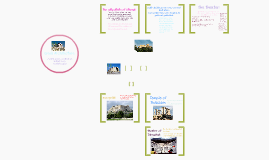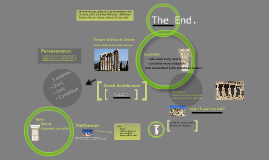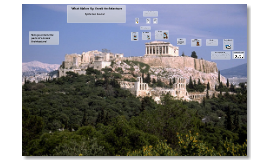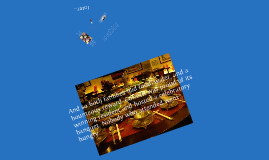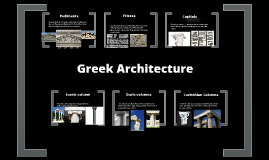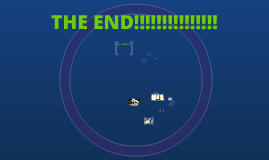Greek PowerPoint
Transcript: C O R I N T H It was the morning of the Olympic games. I had traveled to the colosseum near Olympia from Corinth, a journey that had taken several days on foot. I'd come all the way to turn a profit at the betting stands to supply for my family- it's a guilty pleasure of mine. Now, I wasn't an educated man by any standards, but I was a guard of Corinth, and I had earned the honor to protect my people. I had grown up in an outlying village, farming for a living, you see. I scrounged up the money to purchase a house in the city. It was a simple one-room thing, nothing compared to the manors of nobility, but it was home. What more could be said? But I digress. The day the Olympic games began, a sacrifice was held and served as a meal- lamb, roast leeks, bread, and goat cheese- before the brazier was lit. The games had begun. When I was finally able to get to the betting stalls, I carefully examined the runners. "Who's this one?" I asked the bet taker, pointing at a well-built man. "A fisherman from Corinth," he replied. Corinth! I gambled twenty coins that he'd win the final race. My runner almost lost his first race to a rival city-state's, but pulled through for me at the finish. Just one more race and I'd be twenty coins richer. That could buy enough olives, bread, and fish to feed my family for a week! The runner almost lost the final race, but sprinted through the finish line at the last moment to score a victory for Corinth! I had won twenty coins, and my family was treated to a meal of figs and fruit when I returned... Later... Back at the home of Altain, the winning runner, they had a feast of bread, fish, olives, fruit, and even a sacrificial lamb. Their winnings were plentiful. Altain's sons, Helix and Hrothar, and his wife, Delia, did not go hungry for weeks. "Father," Helix, the elder son, said to Altain, "will we be able to afford flute lessons again, now that you've won the Olympic games?" Altain smiled, "That and poetry, son. You will be a great storyteller, with an imagination of your size." Helix smiled and replied, "May we also buy more yo-yos? Hrothar continues to break them." Altain laughed and nodded. "That as well. Pray to Zeus, and you might even get two more yo-yos." All the laughing reminded Helix of his schooling as a younger boy. He and his friend hadn't realized what their slaves had escourted them for. The children who attended schooling lessons were beaten, and, if necessary, their friends were as well. Almost everything went unnoticed. At least they didn't live in Sparta. But for now, the family simply laughed and ate and celebrated their fortune. And so both families had food, water, and a bounteous reward. Corinth was proud of its winning resident and hosted a celebratory banquet. Nobody who attended went hungry. THE END Right here. A F I C T I O N A L S T O R Y A B O U T F I C T I O N A L C H A R A C T E R S






